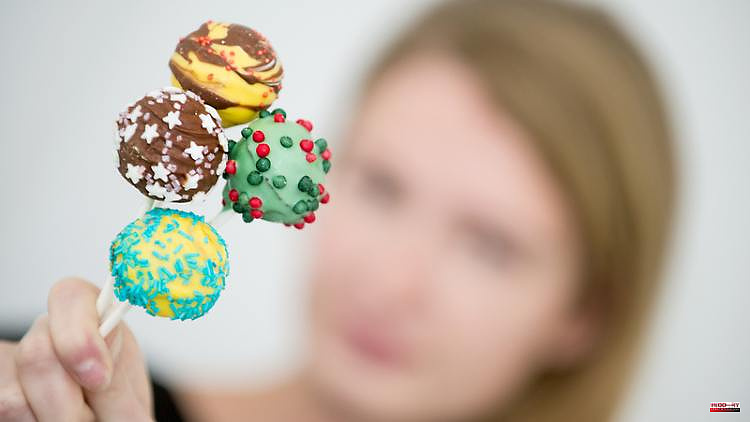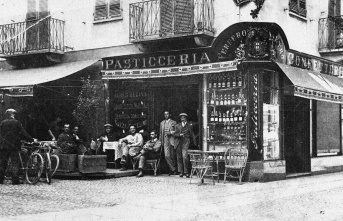Cake lollipops are not only ideal for children's parties. They're also a trick to give a failed cake or dry cookie a second chance. What to look out for so that cake pops succeed and don't fall off the stick.
As an eye-catcher at cake buffets or children's birthday parties, they bring the wow factor: colorful cake lollipops, which are also called cake pops - a neologism from the English terms "cake" (cake) and "lollipop" (lollipop). Amazed, you then ask yourself: How does the cake get on the stick?
There are two ways to achieve this goal: In the first variant, small cake balls are baked from classic batter and then skewered on them. "The dough should be really simple - that is, without ingredients such as raisins or pieces of nuts. Otherwise the cake pops will fall apart later," says the baking book author Christa Schmedes. Schmedes advises that it is better to save such chunky ingredients for decoration.
The second variant uses already baked cakes. "The cake is simply crumbled and mixed with some cream cheese - also low-fat if desired," explains Kathrin Runge, who shows cake pops recipes on her food blog "Baking makes you happy". This creates a mass that can be rolled into balls with your hands and stuck onto the stick.
This type of preparation is great for concealing cake accidents. For example, if a loaf cake is broken or a little too dry, you won't even notice it as soon as it has turned into a colorful bouquet of cake pops.
Ready-made cakes from the supermarket or biscuits that have dried out in the open bag can also be crumbled into cake pops. It is not only practical that leftovers can be used up, but also that the oven can remain cold.
In terms of taste, the cake pop variants based on crumbs can be sent in different directions. A combination that Kathrin Runge particularly likes is cake pops made from crumbled lemon waffles and cream cheese. She then covers the balls on a stick with white couverture and sprinkles them with lemon zest. "Orange juice, cinnamon or fruit yoghurt also ensure that cake pops taste anything but boring," says Runge. The same applies here: A look at the supplies in the refrigerator or kitchen shelf brings completely new ideas.
It doesn't matter whether the cake pops are based on cakes or biscuits: it can sometimes be a bit tricky to find the right consistency so that the balls don't break when skewering and decorating. If the cake pop base is too moist, it is best to send it to the fridge for at least 15 minutes or add more crumbs. If the mass is too dry, a dollop of yoghurt or cream cheese can help.
You should also make sure that the cake pops are not too big. "So that the balls hold well on the sticks, it helps to dip the ends in couverture and then put the cake pops on top," says Runge. Speaking of "sticks": Many drugstores and supermarkets now have special cake pop sticks in their range, including edible ones made from grain and apple fibre.
If you don't feel like crumbly stuff and want to bake the batter directly into small balls, you need the right mold. This can be a silicone baking mold. "They are practical because they do not have to be greased and the small cakes can be easily removed from them after baking," says Schmedes.
If you want to make it even easier, get a cake pop maker. The device is similar to a waffle iron: fill the cake batter into the wells, put the lid on, let it bake for a few minutes - done. If the perfect shape is not so important to you, bake the dough on a baking sheet and then cut it into rectangles or squares.
Cake pops are only complete when they are covered in icing and decoration. Here you can freely follow your preferences - and what the back drawer and artistic talent have to offer. According to Schmedes, the cake balls should be well cooled when decorating.
If you want it classic, dip the small cakes in melted couverture and sprinkle them with sprinkles or sugar pearls. Food coloring stirred into white couverture ensures that the cake pops really pop. "It also tastes good if you first coat the cake pops with a little warmed apricot jam and then dip them in the glaze," suggests Schmedes.
So that the freshly coated cake pops do not get any quirks, it is best to let them cool down standing up. Runge sticks the skewers into a piece of Styrofoam or an egg carton that she has weighed down beforehand. "Alternatively, you can also turn a colander over and push the skewers into the holes or place the cake pops in glasses," says the food blogger.
6












